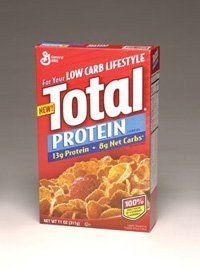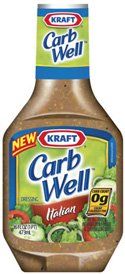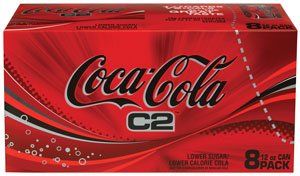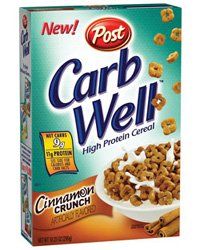Special Report: Low-Carb Foods
Inspired by the popular but controversial Atkins and South Beach low-carb eating regimens, consumers have turned to low-carb products in record numbers.

Meals in ConAgra's new Life Choice line average 15 g of total carbohydrates and 35 g of protein per serving.
Photo courtesy of ConAgra.
Nearly 59 million American adults are obese, not counting overweight children and adolescents, whose numbers have almost doubled over the past decade.
Inspired by the popular but controversial Atkins and South Beach low-carb eating regimens, consumers have turned to low-carb products in record numbers. Sales of low-carb products grew 103% to $1.4 billion in 2003, according to Nutrition Business Journal (NBJ). Some 930 new products bearing low-carb claims were introduced in the last five years, with most of the growth between 2003 and 2004, according to Mintel's Global New Products Database (Chicago).
Will low-carb last? Time will tell, although the low-carb market seems destined to veer down the same road as low-fat foods in the 1990s.
"There is no free lunch, so to speak," says Julie Meyer, RD, a nutritionist in private practice in Brooklyn, NY. "Just like the low-fat craze of the early 1990s, I think we will soon see low-carb dieters packing the pounds back on. A low-carb cookie is still a cookie, and should be eaten as a treat, not an everyday food."
Science hasn't helped. The jury is still out on the long-term effects of the Atkins and South Beach diets and products. Research is under way, but so far, the results are inconclusive. There simply is not enough epidemiological data on low-carb diets.
What's more, the willingness of dieters to follow the complex rules of these eating plans is questionable. And, dieters don't always understand low-carb weight-loss plans. Two people were asked to leave a buffet-style restaurant in Utah after one of them returned to the table with a 12th slice of roast beef. In an interview with the Associated Press, the couple explained that they were "finishing their second week of the Atkins diet" and preferred the restaurant because they could "just eat meat."
Some consumers avoid carbohydrates by cutting out perfectly healthy foods like orange juice. The low-carb products they can eat are not necessarily healthy food choices; some are higher in fat and calories than full-carb foods.
Well aware of these problems, low-carb manufacturers are becoming more adept at using new technology to make better-tasting and healthier foods. Still, many want to know more about the science behind the ingredients and how well they will perform over time. Others are hedging their bets by marketing both low-carb and conventional lines, or by marketing "reduced-carb" products. Poorly conceived products with unrealistic expectations could create a backlash that will give consumers more cause to doubt the market.
EARLY DAYS
The low-carb market began early in 2003. Shoppers asked grocery stores for Atkins-friendly products. Grocery buyers requested more low-carb sets. By the end of the year, companies were hard at work on low-carb formulations.
Ordinarily, new products are fast-tracked through research and development in 12–18 months. Low-carb foods were ready in months because formulators already knew how to remove carbs.
In its January issue, the UC Berkeley Wellness Letter outlined the basics. In low-carb products, carbohydrates are replaced with refined wheat flour, soy flour, soy protein, or wheat protein. The volume is replaced with wheat bran, oat bran, inulin, or other forms of fiber and polydextrose, hydrocolloids, resistant starches, or other bulking agents. The sweetness from sucrose, fructose, and high-fructose corn syrup is replicated with sugar alcohols (maltitol, lactitol, sorbitol, erythritol, etc.), Splenda (sucralose), inulin, or high-intensity sweeteners such as acesulfame-K or aspartame.
While admirable, the speed with which low-carb products went through R&D hurt some of the earliest products. "Carbohydrates, in general, provide sweetness, flavor and flavor development, color and color development, and physical structure," says Steve Young, PhD, technical advisor at Matsutani America (Decatur, IL). "Thus, reducing total carbohydrates impacts taste, smell, appearance, touch/texture, and, yes, how products sound. The more carbs that need to be removed, the greater the formulation challenge and the greater the likelihood for failure."

Balance Bar's Chocolate Fudge energy bar, sold under Kraft's new Carb Well line, has 2 net carbs per serving.
Photo courtesy of Kraft Foods.
There were failures. "The first wave of low-net-carb products were, by general consensus, less than optimum," says Dan Best, marketing director at Pizzey's Milling (Angusville, MB, Canada). "This is normal. It's the next wave or two that will determine if this category really has legs."
"Food companies were in such a hurry, quality was a little lax," says Jim Kappas, director of sales and marketing at Cargill Health and Food Technologies (Minneapolis). "Lately, formulation quality has been better. Everyone is aware that the lack of good products killed low-fat in the 1990s."
"In the long run, low-carb products need to taste good and be nutritionally balanced to have mass appeal," says Chuck Werstak, application scientist and low-carb specialist at ADM (Decatur, IL). "There are a limited number of consumers that will sacrifice taste."
GROWING PAINS
Apart from quality, labeling could slow down the low-carb tsunami. "The simplest, most direct phrase, 'low carb,' is not allowed on food labels," explains Karen Duester, president of Food Consulting Co. (Del Mar, CA). "FDA does not permit carbs to be described by the terms free, zero, no, without, trivial source of, negligible source of, insignificant source of, low, little, few, contains a small amount of, low source of, reduced, less, lower, or fewer.
According to Duester, labels may make accurate quantitative statements such as "5 g of carbohydrates per serving," but may not characterize the amount of carbohydrates present. Context matters. A statement such as "only 5 g of carbs" for example, is not allowed since the word "only" characterizes the level of carbohydrates as low.
FDA (Rockville, MD) regulations do allow the terms net carbs, net impact carbs, or net effective carbs. "These terms are being used by the food industry to reflect the amount of carbohydrate a product contains that will impact blood glucose levels," says Duester. "The value is derived from the formula: net carbs equal total carbohydrates minus dietary fiber minus sugar alcohols."
These terms inadvertently downplay calories. Take bread. One slice of Atkins low-carb bread has 60 calories, and 8 g of total carbohydrates, according to the UC Berkeley Wellness Letter. Diet breads average 10 fewer calories and 2 more grams of total carbohydrates. However, Atkins bread claims only 3 net impact carbs on the label.

Total Protein from General Mills offers 13 g of protein and 8 g of net carbs, along with 100% of the daily value of 11 vitamins and minerals.
Photo courtesy of General Mills.
"Consumers aren't quite sure what a low-carb diet is," says John Martin, food and nutrition scientist at Orafti (Malvern, PA). "Sometimes they don't realize how many carbohydrates or calories are in foods."
Lack of a low-carb definition convinced ConAgra Foods (Omaha, NE) to forego a net-carb claim on its 14-item Life Choice carb-conscious meal line. "Science hasn't agreed on the meaning of net carbs," says Theresa Paulsen, director of communications. "Consumers can subtract fiber if they choose, but we feel it's less confusing to list total carbohydrates on the label." The meals average 15 g of total carbohydrates and 35 g of protein.
ConAgra filed a citizen petition in January requesting that FDA establish definitions for carbohydrate content claims using the terms free, low, good source, and excellent source. FDA is evaluating the petition.
"Many commercial, legal, health, and diet-related conundrums in the current marketplace could potentially be settled by how the low-carb definition issue is handled by FDA," says Phil Rakes, technical director of Main Street Ingredients (LaCrosse, WI).
FDA isn't likely to publish a definition soon. "Before defining low carbs, FDA needs to resolve several scientific issues, such as how to test for total dietary fiber versus soluble fiber, how to test for the different sugar alcohols, and how to consistently count calories," says Rakes. "Some people at FDA feel that all soluble fiber is digestible and hence should be counted at 4 calories per gram of dry matter. Another group petitioning FDA says it has data to support counting soluble fiber at 2 calories per gram of dry matter."
Expect consumers to be confused for some time to come. "There are a lot of 'low-net-carb' products on the market that aren't really as low in carbohydrates as they claim," says Pizzey's Best. "It may be that the carb value of ingredients is being overstated in the calculated net-carb values. In addition, some resistant starches can increase in carb value during processing. It is absolutely essential that product developers analyze, rather than calculate, the net-carb values before making claims."
NO CARDBOARD, PLEASE

Low-carb consumers have several salad dressings to choose from, including Kraft's Carb Well Italian dressing. Other flavors are ranch, blue cheese, and classic Caesar.
Photo courtesy of Kraft Foods.
While labeling can slow down the low-carb craze, product quality can stop it altogether. "Atkins turned what we thought we knew about nutrition upside down," says Sharon Gerdes, tech support consultant at Dairy Management Inc. (Rosemont, IL). "But people are the same. They won't eat what they do not like."
"When you pull out sucrose, brown sugar, honey, and so on from foods, you remove the tastes that people instinctively like," says Gerdes. "Low-carb breads, for example, don't taste the same because they use a lot of wheat gluten without the robustness and flavors of sweeteners."
"Higher-protein diets call for consuming as much as 30% of calories in the form of protein," says ADM's Werstak. "The cost is flavor. Flavor is a combination of many ingredients. A chef doesn't just broil a steak; he or she chooses quality seasonings to help bring out the flavor profile intended to enhance the eating experience. Low-carb formulating is no different."
"Depending on the types of proteins and their specific functionality, proteins affect the overall texture of the food system," says Grace Harris, manager of applications and business development at Proliant Inc. (Ames, IA). "Emulsifiers, fats, modified starches, and so on help improve texture when higher levels of protein are used."
For these reasons, bakery products are among the most difficult to convert to low-carb. Traditional baked goods owe their flavor and texture to yeast nourished with flour and carbohydrates, two big low-carb no-nos. "In leavened baked goods, there is a tendency for the product to get tough or less tender and collapse when too much egg, wheat, or otherwise unmodified protein is used to replace the starches and sugars that are usually present in these products," says Main Street's Rakes. "If too much unmodified fat is used to replace the removed carbohydrates, the result is a soft, greasy texture with a possible reduction in leavened volume as well."
In lieu of yeast, low-carb baked goods create volume with chemical leavening agents. These are carbon dioxide-producing combinations of acids and alkalis. "While processors still need to address other aspects of the formulation such as sweeteners, emulsifiers, and stabilizers, chemical leavening will simplify the volume-development variable in the formulation equation," says Barbara Heidolph, food market development manager at Astaris (St. Louis).

Chemical leavening agents help improve volume and texture in Astaris' EZ Dough.
Photo courtesy of Astaris.
Astaris developed EZ Dough specifically for pizza crust. Chemical leavening agents achieve ideal volume and textural characteristics in formulas in which fermentable carbohydrates have been replaced with sugar alcohols and artificial sweeteners that may diminish fermentation, proofing, and leavening.
For obvious reasons, soy protein is finding applications in everything from baked goods to pasta. "Soy protein is a high-quality, low-calorie protein," says Geri Berdak, director of public affairs at Solae (St. Louis). "Interest is very high in nontraditional baked goods and snacks right now."
Each food system is different. "In pasta, semolina has a firm texture," says Berdak. "Pizza dough is a little easier to formulate because it has a chewier texture. Some of the isolated soy proteins for pizza crusts have great organoleptic properties, especially for the restaurant trade. We find these isolated soy proteins work very well with flavors. In baked bars, there are soy proteins with gelling properties that help moisture retention and shelf life."
Second- and third-generation low-carb products are concerned with nutritional values. "It's no longer just about low-carb per se," says Steve Snyder, Cargill Health and Food Technologies' director of sales and marketing for nutraceutical ingredients. "Low-carb has opened the door to second-order enabling ingredients like omega-3 fatty acids. The interesting plays aren't just low-carb ingredients anymore."

Coca-Cola's new C2 cola contains half the calories, carbohydrates, and sugar of regular soda. The new product, which launches in June, is one of many mainstream products reformulated for the low-carb market.
Photo courtesy of Coca-Cola.
Dairy proteins successfully entered the low-carb market with a similar value-added strategy. According to Gerdes, whey protein concentrates (WPC) and whey protein isolates (WPI) can be tailored to contribute varying levels of protein, lactose, calcium, and specific lipids. "A growing number of food companies find dairy proteins a good source of these nutrients," she says. "ConAgra's new Life Choice line contains WPC. General Mills included WPC in its new low-carb reformulations. Pasta, bread, ice cream, bars-the number of applications is growing daily."
WPC delivers a slightly sweet flavor to baked goods, and enhances other flavors. The small amount of lactose in WPC acts as reducing sugar, continuing Maillard reactions that influence color and flavor.
Milk producers have adroitly used technology to modify dairy proteins for use in low-carb products. Ultrafiltration retains milk fats and lipids, but removes lactose. A glass of ultrafiltered milk has 3 g of lactose. Regular milk has 12 g. Extruded whey protein forms small, crunchy pellets for snacks and bars. The heat of extrusion slightly denatures the protein, but the general amino acid profile remains intact.
FIBER
Without fiber, low-carb foods can't make those all-important net- impact-carb claims. But formulating with fiber means more than sprinkling oat bran onto a coating. "There are two general types of dietary fibers, soluble and insoluble, but there are many, many sources and variations of each of these basic types," says Matsutani's Young. "Careful selection based on color, flavor, nutritional efficacy, physical functionality, and economics are critical to success.

Kraft's Post brand of cereals also includes Carb Well items, including cinnamon-flavored cereal. The cereal provides half the carbs of other cereals along with 11 g of protein.
Photo courtesy of Kraft Foods.
According to Young, not all fibers are compatible with either the general sensory attributes of the finished food or the general methods by which certain foods are manufactured. "In simple beverage systems, it will be necessary to select a water-soluble fiber that has virtually no taste or odor impact on the finished beverage," he says. "In more complex foods, like baked goods, color, flavor development, and structure become important and no one fiber can deliver all functionality necessary for success."
A little of any given fiber may be highly desirable, but as with other ingredients, too much of a good thing can be bad. "It is much preferred in baked goods to consider multiple dietary fiber sources and types in order to take advantage of the positive functionality and sensory characteristics of each before reaching the individual ingredient's limits of use," says Young.
For example, OatVantage reduces the net carbs in the new Avon Wellness Balanced Breakfast Bar by 1.5 g since it contains 1.5 g of oat beta glucan, according to Nurture (Devon, PA). Adding oat beta glucan in the form of a dietary supplement or ingredient in a functional food can reduce the glycemic index of a meal up to 60%. Foods with a lower glycemic index result in lower, more-beneficial levels of blood glucose.
OatVantage is functional. The fiber adds an all-natural, very mild oat flavor and a creamy mouthfeel. Soluble fiber has also been shown to increase satiety. By helping people feel fuller longer, satiety enables people to reduce the amount of food they consume. Additionally, oat beta glucan attenuates glycemic response, thereby maintaining healthy blood glucose levels.
Inulin, a plant-derived soluble fiber, also increases satiety. Inulin has quietly become a mainstay of the low-carb movement. Its slightly sweet flavor profile, clean taste, prebiotic properties, and processing abilities have replaced carbohydrates in everything from ice cream and yogurt to energy bars and cookies.
Finally, not all fiber ingredients retain their dietary fiber character and analytical amount. "Thus, it is critical to use fibers that are stable to formulation, process, and packaging demands," says Young. The downside: net carbs increase across processing and shelf life of the finished food.
SWEETENERS
As early low-carb formulators discovered, good sugar replacements are hard to find. Saul Katz, president and COO of Solo GI Nutrition (Edmonton, AB, Canada), isn't surprised. "Nature energizes us with fats and proteins and tantalizes us with carbohydrates," he says. "Nature is brilliant, but not redundant."
Carbohydrates improve flavor and texture. "Proteins, emulsifiers, fats, modified starches, etc., affect the overall texture of the food system," says Proliant's Harris. "Obviously, an increased use level of a flavor system improves sweetness. Often, artificial sweeteners are needed."

General Mills' Yoplait brand yogurt now has a low-carb line called Yoplait Ultra. The new line contains 70% fewer carbs and sugar than regular low-fat yogurt.
Photo courtesy of General Mills.
But which one? There are many alternatives, each with advantages and disadvantages. "Typically, when sugar is removed from products such as ice cream, confections, and sweet baked goods, other ingredients need to be added to replace the bulk of sugar as it provides many functions in these systems," says Donna Brooks, product manager at Danisco Sweeteners (Ardsley, NY). "Although high-intensity sweeteners can replace some of the sweetness, Litesse polydextrose, lactitol, and xylitol can be useful to replace the functionality. Lactitol and xylitol also provide sweetness."
Some products use small amounts of high-intensity sweeteners. "Sucrose and other caloric sweeteners are best replaced with a blend of high-intensity sweeteners," says Greg Horn, senior director of healthy ingredients at Wild Flavors (Erlanger, KY). Sweetness Enhancer, for example, helps round out the flavor of high-intensity sweeteners to make them taste closer to the caloric sweeteners. Additionally, the texture lost from the removal of caloric sweeteners can be replaced with some degree of success by hydrocolloids."
"No single high-intensity sweetener can match the sweetness profile of sugar," says Graham Hall, president and COO of Nutrinova Inc. (Somerset, NJ). "Sucralose, for example, has a noticeable aftertaste that limits its application potential as a single sweetener. However, blending with Sunett (acesulfame-K) and other high-intensity sweeteners allows the taste profile to come much closer to the taste of sugar."
There is some evidence that the pendulum is swinging the other way, and manufacturers are beginning to rely less on sugar replacers. "It would appear that some companies are considering the possibility of marketing 'reduced-carb' instead of 'low-carb' products since the flavors and costs associated with them tend to be less harsh," says Young.
Solo GI, for example, chose to use fruit and fructose in its Advantage GI nutrition bars launched late last year. The bars stress low glycemic index rather than low carb content, and are aimed at Atkins and Zone followers.
The bars get their taste from complex carbohydrates. Solo GI's Lemon Lift Advantage Bar, for instance, gets its sweet taste from plum puree, fructose, inulin, dried cherries, and glycerine. The 50-g bar has an Atkins-busting 28 g of total carbohydrates and 4 g of fiber. However, the bar received a 26 glycemic index rating from Glycemic Index Testing (Toronto).
"Complex carbohydrates are digested slowly, so the body does not experience the peaks and crashes that occur with simple sugars," says Solo GI's Katz. "It's the natural evolution of low-carb foods."
THE NEXT WAVE
With so many companies working on low-carb foods, change is inevitable. "Even though the growth of low-carb diets has been explosive, current market research shows that consumers will begin to permanently adapt the reduction of carbohydrates into their diet, which will sustain this market segment for the long term," says Danisco's Brooks. "The increase in the number of people with diabetes worldwide will also substantiate this type of diet and eating style."
"It is difficult to predict whether the low-carb food and beverages segment will continue to grow," says Nutrinova's Hall. "But as consumers become increasingly health conscious, demand for food and drink innovations that offer both health benefits and meet taste expectations is predicted to soar."
"The one thing that can kill this category is lack of nutritional balance, but I don't see that happening," adds Cargill's Snyder.
The longevity of low-carb foods will come down to science. The results so far have been inconclusive, although there have been surprises.
At Orafti, John Martin and fellow food and nutrition scientist Hilary Hursh recently completed a metaanalysis of hundreds of epidemiological low-carb diet studies. Low-carb had little effect on serum cholesterol. "Lipid studies seem to indicate that low-carb diets have a slight positive effect on cholesterol, which is not what we expected," says Martin. "In fact, the literature suggests a low-carb diet has little effect on cholesterol."
Researchers at the Philadelphia Veterans Affairs Medical Center (Philadelphia) reached the same conclusion after observing HDL and LDL levels among 45 subjects on a six-month low-carb diet. Average LDL cholesterol levels decreased more in the low-carb group than the control group. Moreover, HDL cholesterol increased more in the low-carb group. However, the results weren't conclusive. LDL increased 10% or more among 13 members of the low-carb group, while only five members of the control group experienced similar results.
Calorie control was another surprise. "The literature does not seem to support the theory that weight gain can be prevented by taking in only as many calories as you use," says Martin.
Finally, there was evidence that low-carb diets affect kidney function. "High-protein diets increase the nitrogen load in the body," says Mark Izzo, director of science and technology. "The kidneys are under stress to process the extra nitrogen released in the bloodstream."
In the long run, the low-carb craze may evolve into products with moderate amounts of protein, small amounts of fat-no trans fat, of course-and reduced amounts of carbohydrates. "Low-carb will remain in some shape or form," says Izzo. "It's a very real approach for diabetics watching the glycemic index. People with digestive problems could benefit as well--30% of low-carb dieters have digestive problems. Modified low-carb could be the first intersection between diet and digestive health."
The impact of GLP-1 on supplements, functional foods, and retail: a webinar from CRN
January 29th 2025The recent CRN webinar discussed GLP-1 medications' impact on supplements, functional foods, and retail, covering consumer trends, global market insights, retailer strategies, industry implications, and future opportunities for innovation.




